Painting Zen
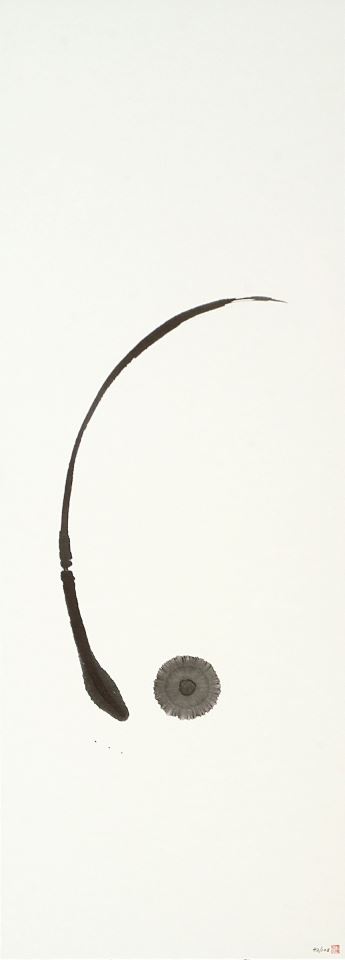
While "resting in presence and moving from emptiness" (the methodless method I discoverd, practice and teach) I was ushering "Contentment Being Oneself" into form, the three little dots beneath the soaring brush stroke insisted on coming along. When this image was chosen to be the cover of Psychological Perspectives, a Jungian journal, I asked the graphic designer to send me a proof before he finalized it for printing. It turned out he took out the three little dots because he thought they were dust spots. He asked me what was their significance. I replied, "They could be 'vulnerable', 'helpless', and 'not-knowing'. When we embrace these as virtues in ourselves, we could have contentment." The three little dots reappeared!
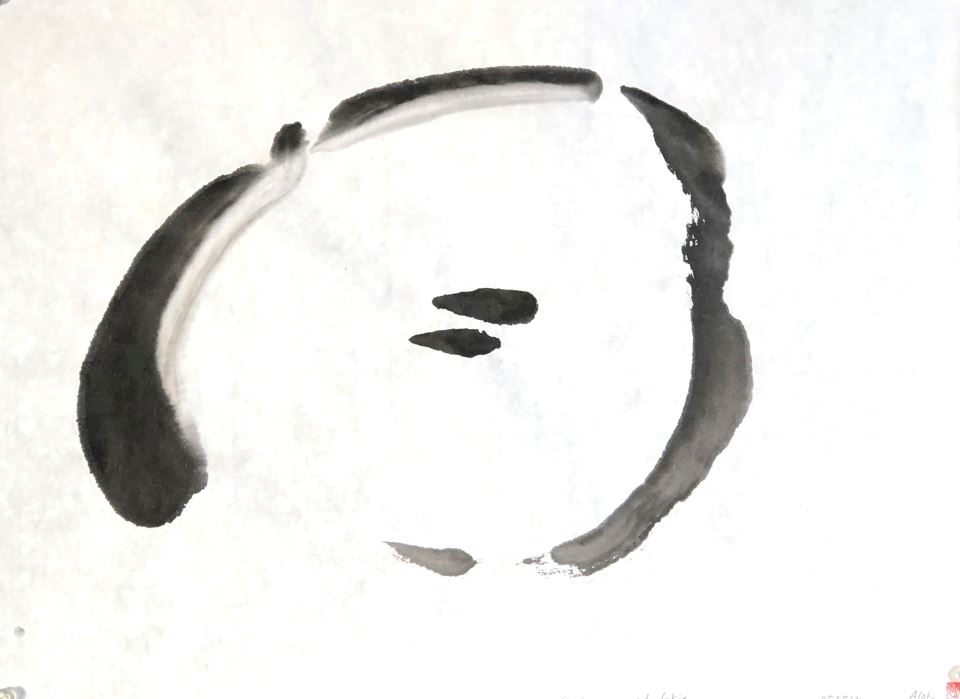
A beautiful woman from Texas wanted to study with me. She came to see me in Sedona, Arizona. While I was telling her of the three brushes I designed and had them made by the best traditional brush factory in China, out of the blue, she blurted out “You are the brush, I am the ink!” Wow! her feminine confidence and good humor cracked me wide open! I started to call her “Inkie”. First thing in the morning when I am quiet and waking up, I would call inside, “Hi Inkie!” and there would be her response inside, “Hi Alokie”. In this “inward” space, two “presences” are able to truly meet.
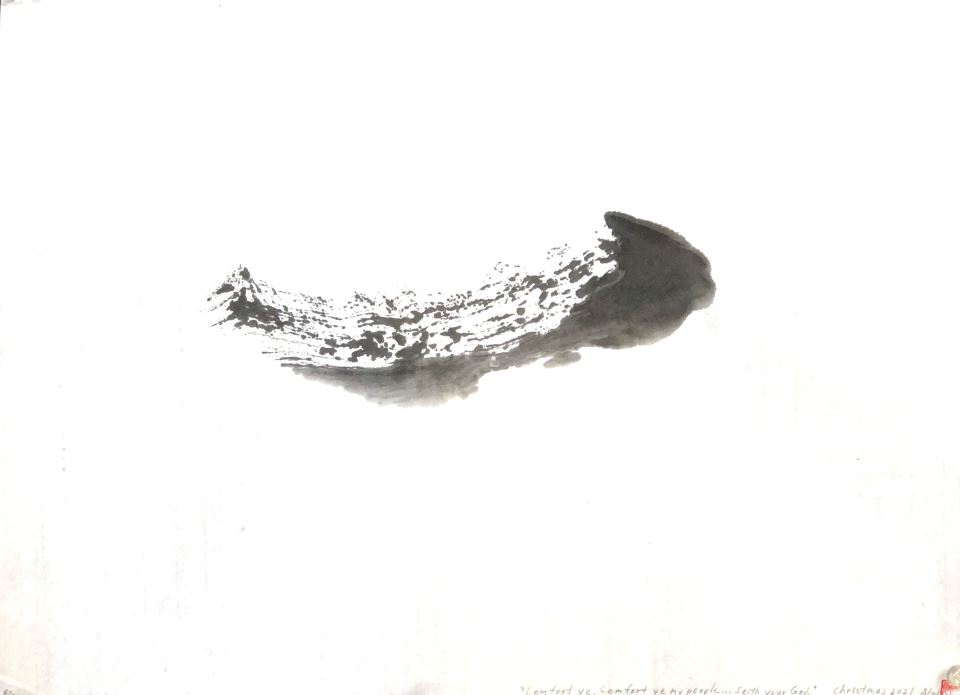
Comfort ye, comfort ye, my people!
Christmas Day 2021, I was humming along and listening to the first aria of Handel’s Messiah and I wanted to paint it. What used to be a sensuous mature female brush, over the years of many paintings it had lost more than half of its hair! Still, I loaded one side of the brush with dark ink and the other side with light ink. Then the one slow tactile movement of the brush felt like the fusion of our human suffering and our being comforted in our inevitable suffering, by the Goddess, or by Existenc itself! Perhaps, even old individuals or instruments, no matter what our present condition happens to be, are capable in an ever refreshing way to create beauty or to recognize wisdom, maybe even add some zing to the completion of the movement, as indicated by the naughty lilt at the end of the dry part of the brush stroke! This painting attests to the persistant opportunities and availability of our "healing and awakening into life and death!"
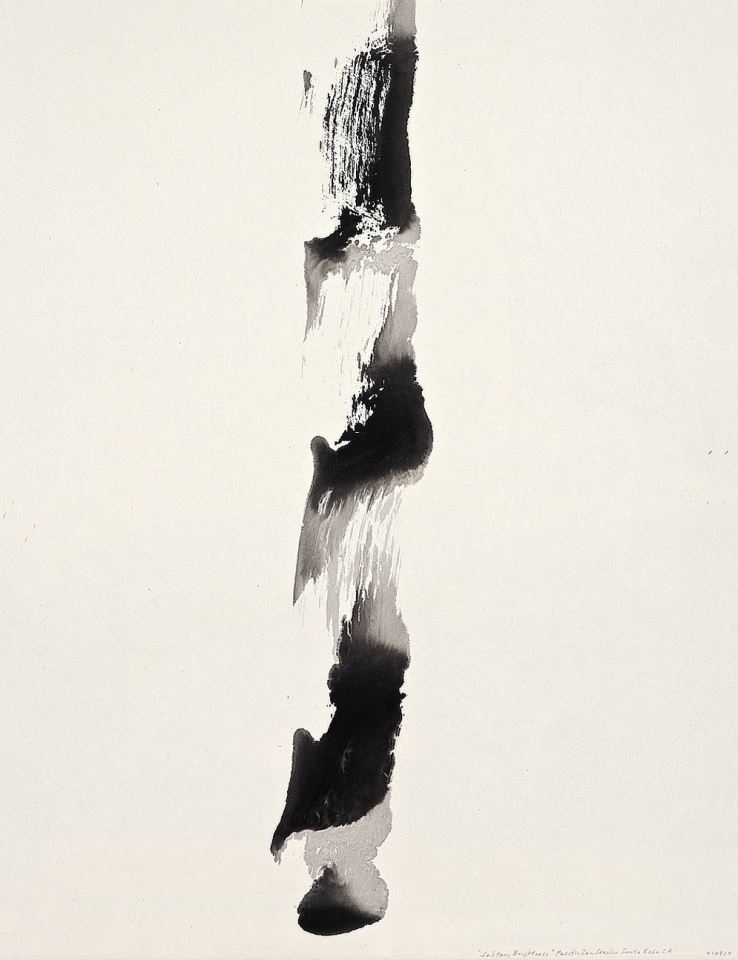
I heard the composite koan by John Tarrant Roshi and felt an intimacy with it:
There’s a solitary brightness with neither fixed shape nor form It listens to the dharma it understands the dharma it can teach the dharma That solitary brightness is you!
After hanging out with the koan for several days I felt the readiness coming on to paint it. I looked at the brushes. A goat hair brush with a long water buffalo handle called to me. I loaded one side of it with light ink and the other side with dark ink. Laying the brush on its side, it rolled and skipped from the bottom to the top of the painting. I had never seen nor participated in such a stroke that combined rolling and skipping!
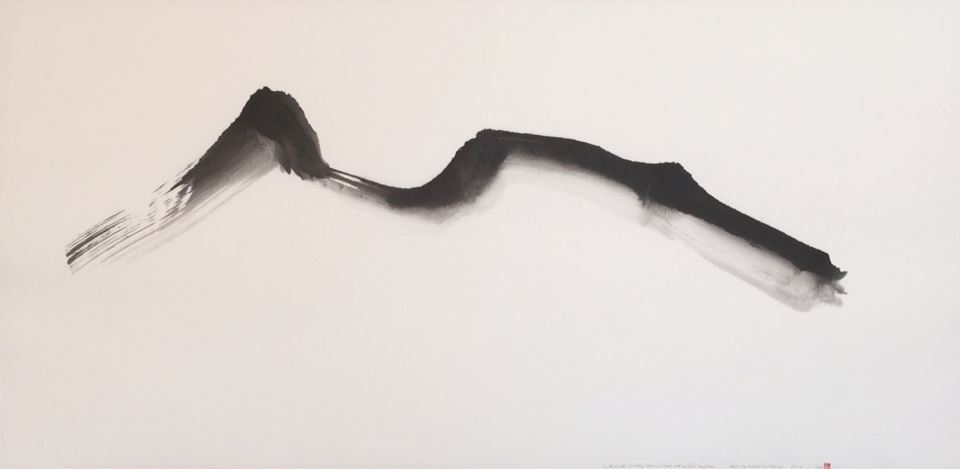
This is a koan by Dongshan. When I first heard it, I was intrigued and wondered how it could possibly be painted. After hanging out with it for several days, it felt promising but didn’t seem like it would happen. Then just as I was packing up my painting tools, I whipped around to the painting table and it happened, so simple, so pure-- on the road with no dust!
